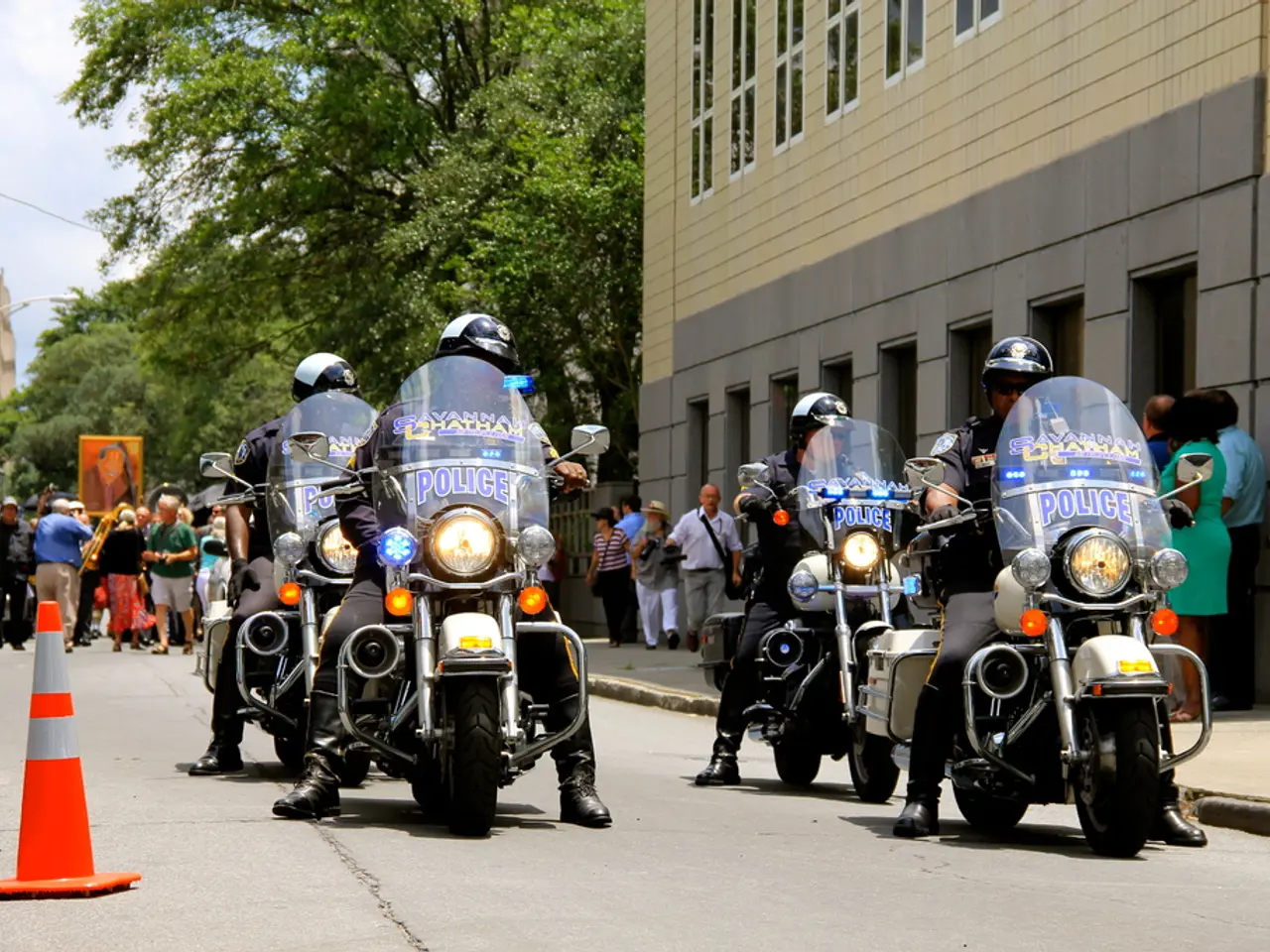Implementation of comprehensive security strategy commences for Albuquerque's public transportation service, ABQ RIDE.
Albuquerque, New Mexico, is taking significant strides in enhancing the safety of its public transportation system, ABQ RIDE, with the implementation of a long-term transit safety plan. This comprehensive initiative, announced by Albuquerque Mayor Tim Keller, is focused on improving transit safety through staffing, budget allocation, and various safety measures.
Staffing
The plan calls for the incremental hiring of Transit Safety Officers (TSOs) to expand to 87 positions. As of mid-2025, ABQ RIDE has about 19 TSOs (out of 25 funded) with plans to grow the team to 72 officers and six sergeants. Additionally, key roles such as an ABQ RIDE Safety & Security Manager and a Data Analyst will be created to oversee and analyse safety operations. The plan features a cooperative structure involving ABQ RIDE administration and planning alongside the Albuquerque Police Department (APD) for enforcement, tactical planning, TSO hiring, and training.
Budget
The overall ABQ RIDE system operates on an annual budget of about $67 million. Security costs come from various sources: approximately $23 million from the city’s transportation infrastructure tax, $8 million from county and regional governments, and around $30 million from the city’s General Fund. The multi-year safety plan builds on previous short-term investments and includes funding for staffing expansion, technology, and enforcement efforts.
Safety Measures
The safety plan includes the introduction of physical safety enhancements such as plexiglass barriers for drivers and installation of security cameras in buses and at stops. Deployment of mobile support by the Metro Security Division and contracted security personnel at bus stops is also part of the plan. The use of technology such as the See Say app to allow passengers to report concerns easily is another initiative. The plan also focuses on connection-oriented safety approaches, including leveraging social and community support to address root causes of security incidents, especially for vulnerable populations like people experiencing homelessness or mental health crises.
Timeline
The timeline for the implementation of the long-range transit security plan is set for 2025. The plan operates within constraints, such as federal grant restrictions, which limit extensive design changes to transit infrastructure, requiring the security strategy to work within the existing system design.
In summary, the detailed implementation plan for Albuquerque’s long-range transit safety involves expanding and professionalising staffing, securing multi-source funding within a $67 million annual budget frame, deploying multifaceted safety measures, and maintaining close inter-agency collaboration to ensure a safer transit environment for Albuquerque’s diverse ridership.
The safety transformation of ABQ RIDE includes initiatives like the See Say app and Rules to Ride. The preferred strategy aims to build on the short-term plan, fill identified gaps, ensure safe transit service, and increase ridership. ABQ RIDE's Transit Director, Leslie Keener, stated that the safety strategy has been forming for a long time and that the public's safety is the top priority. The long-range transit security plan implementation is currently underway by ABQ RIDE.
- The long-term transit safety plan for Albuquerque's public transportation system, ABQ RIDE, involves an expansion of the Transit Safety Officers team to 72 officers and six sergeants, with key roles like an ABQ RIDE Safety & Security Manager and a Data Analyst being created.
- The ABQ RIDE system's annual budget of around $67 million supports the safety plan, with security costs primarily coming from sources like the city's General Fund, transportation infrastructure tax, county and regional governments.
- The safety plan incorporates a variety of measures, such as installing plexiglass barriers for drivers, security cameras in buses and at stops, deploying mobile support from the Metro Security Division and contracted security personnel at bus stops, and using technology like the See Say app for passenger safety reporting.




